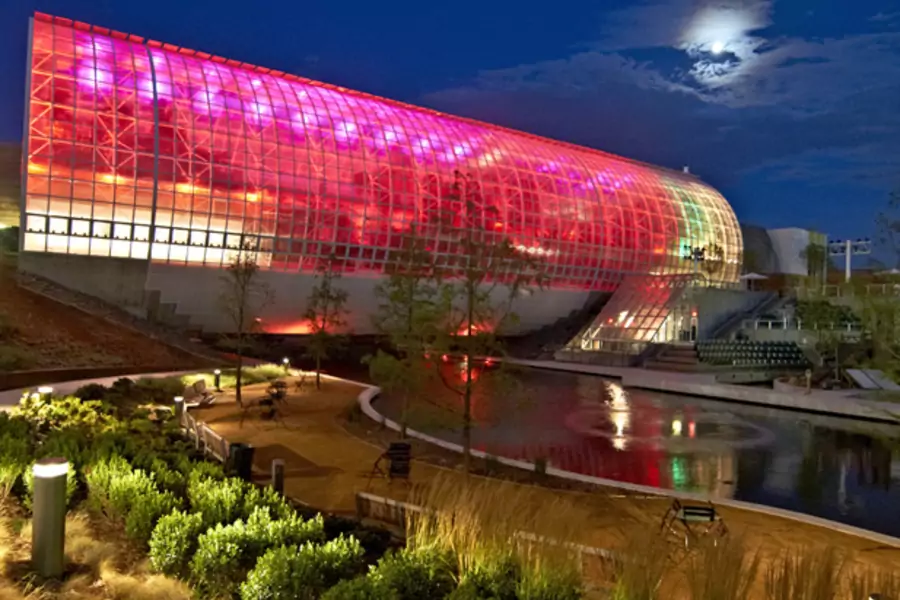Policy Initiative Spotlight: Oklahoma City MAPS Out Revitalization

More on:
For communities looking to attract the coveted highly-skilled, highly-paid workforce, there is often little substitute for a locale's livability. Job opportunities, no matter how plum, may fail to lure workers if a city is determined to be undesirable by potential emigrants. In describing what motivates the so-called Creative Class to relocate, urban theorist Richard Florida notes that "quality-of-place”—a city's built and natural environment, its population diversity and vibrancy—is the deciding factor.
Perhaps no U.S. city has proved more effective at recognizing their quality-of-life shortcomings and making a drastic effort to turn things around than Oklahoma City. The impetus for action, as is often the case, was a crisis. "It was a really destitute place to live," said Roy H. Williams, president and CEO of Oklahoma City's Chamber of Commerce, referring to the state capital in the late 1980's and early 1990's. After booming on a ten-fold increase in the going rate for Oklahoma crude between 1972 and 1981, plummeting energy prices in subsequent years decimated OKC's industry, financial institutions, real estate values and, of course, city coffers.
But the final straw didn't come until 1991, when the city lost out to Indianapolis in a heated competition to woo United Airlines into building a local maintenance hub—a move that would have brought more than a thousand jobs. In the end, the company told city officials that the deciding factor was Indianapolis' higher quality-of-life.
As OKC's leaders licked their wounds in the aftermath, the Chamber of Commerce convened for a major strategy session. "We knew we had to do something out-of-the-box," Williams told me, "We had to build a better product."
Enter the Metropolitan Area Projects Series or MAPS, as it's commonly known. Hashed out by OKC's business and policy community, the public-private initiative, passed in December 1993, laid out a series of major capital projects for construction, including a new sports arena, ballpark, library, trolley transit system, music hall, convention center, and the renovation of a downtown historic district known as Bricktown. This first program, or MAPS 1, was funded by $309 million in entirely local funds, without the issuance of debt, through a 1 percent sales tax increase that would sunset after 5.5 years.
Indeed, MAPS 1 was so successful the city has pushed forward with two more iterations. MAPS 2, also known as "MAPS for Kids," focused on OKC's crumbling education infrastructure, investing close to $500 million in construction for local public schools. MAPS 3, which passed in December 2009 and has projects expected to run through 2017, will provide nearly $800 million in taxpayer funds for a 70-acre grand central park, over 50 miles of new biking and walking trails, and other recreational upgrades.
Those involved in the process say MAPS has worked so well for so long (across multiple administrations) because of the close partnership between the public and private sectors, the fact that each initiative has been targeted and limited in scope, and that there has been such a strong track record of the city delivering on its promises. Indeed, a Chamber of Commerce report states that the total value of new investment related to MAPS from the mid-1990s through 2008 totaled about $3.1 billion, with an additional $1.9 billion announced.
But perhaps the most dramatic symbol of the city's revitalization came in 2008, when the Seattle Supersonics moved to Oklahoma City and, in a matter of four years, made the NBA finals and was deemed the number one sports franchise in America, an ESPN ranking based on an analysis of finances and fan surveys.
"It’s more than just a basketball team: it’s the culmination of 20 years of civic reinvention, and the promise of more to come," writes Sam Anderson for New York Times Magazine on the exceptional rise of the Thunder. "After all of that sacrifice — the grind of municipal meetings and penny taxes and planning boards, the dust and noise and uncertainty of construction, the horror of 1995 — the little city in the middle of No Man’s Land has finally arrived on the world stage."
More on:
 Online Store
Online Store